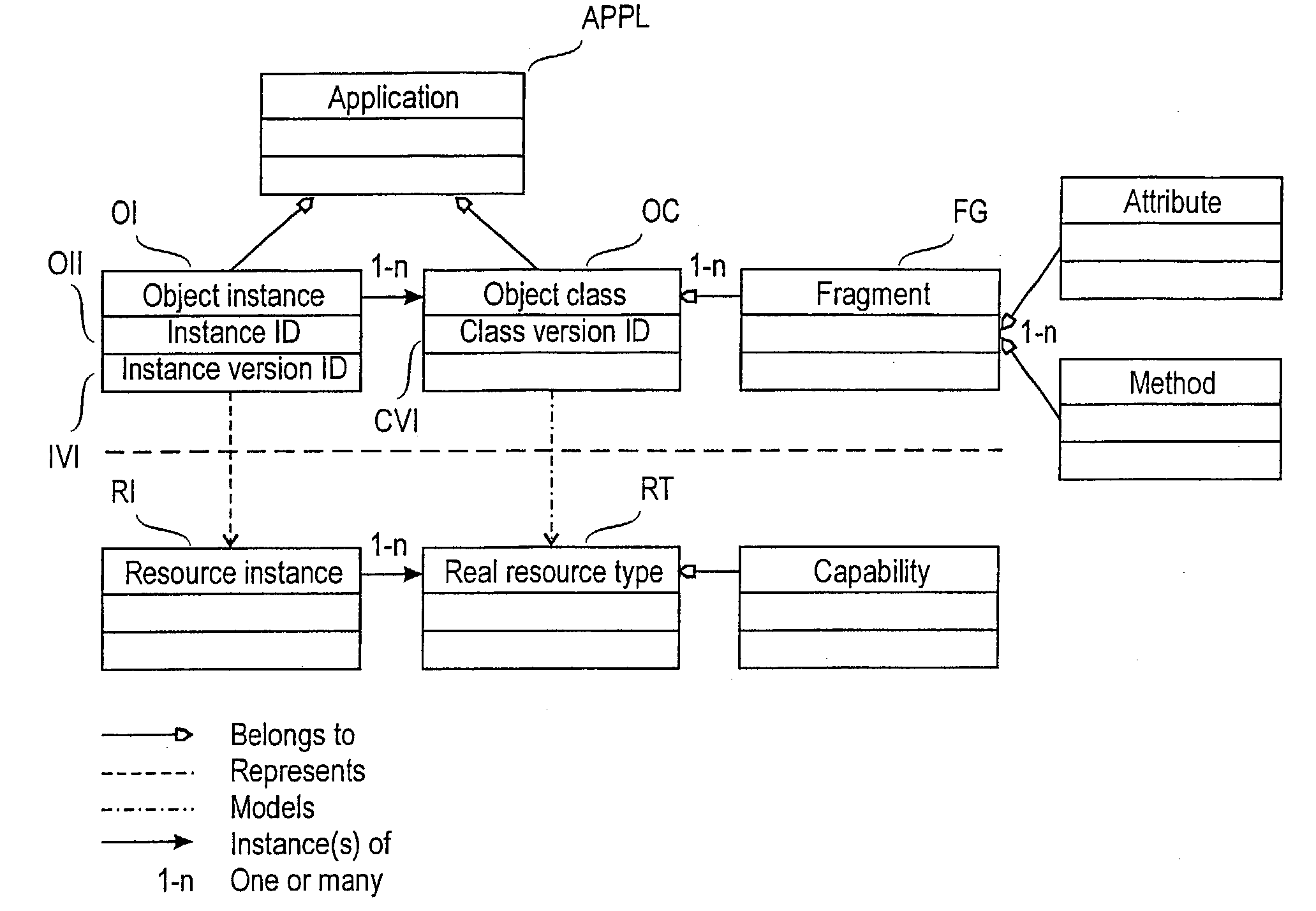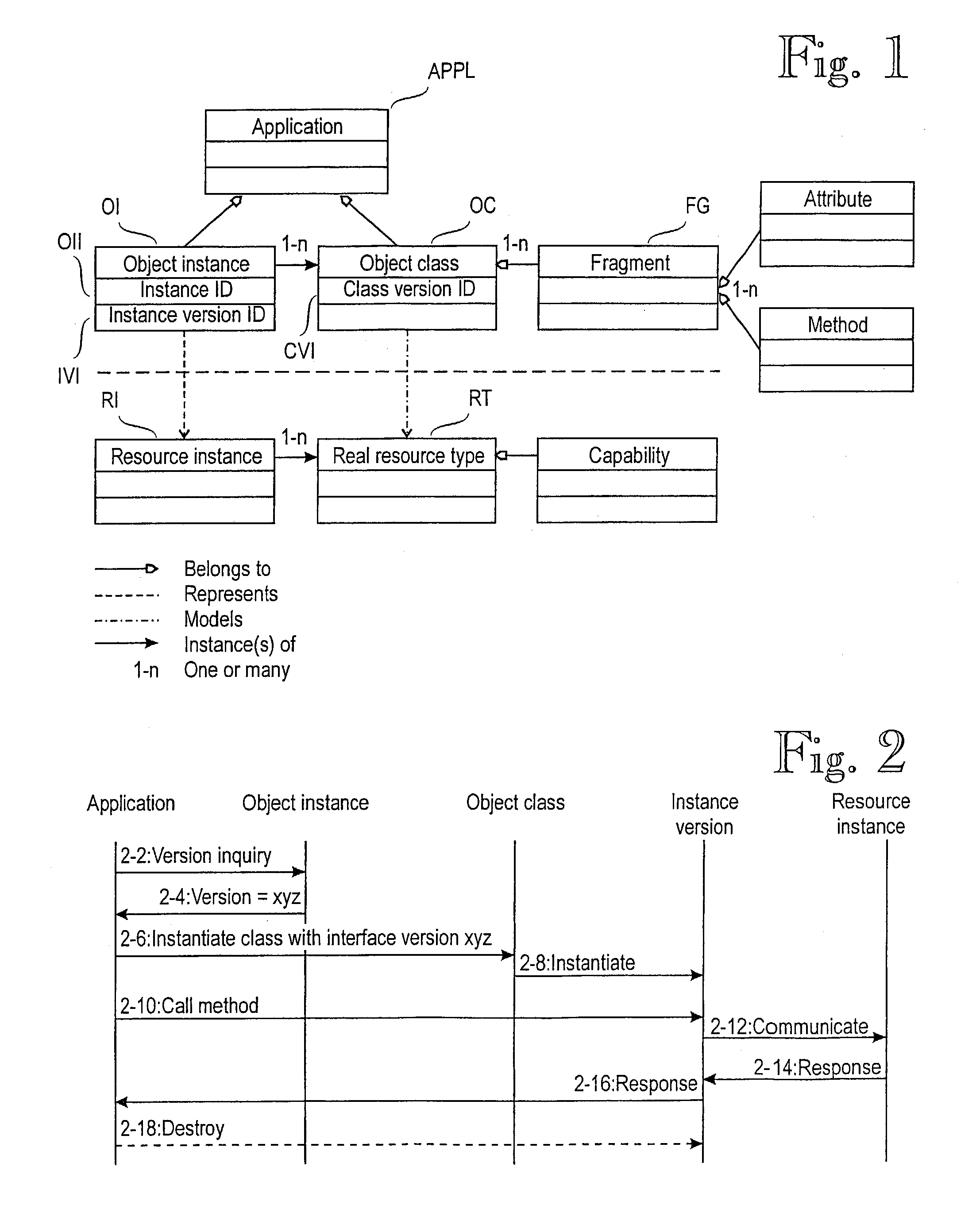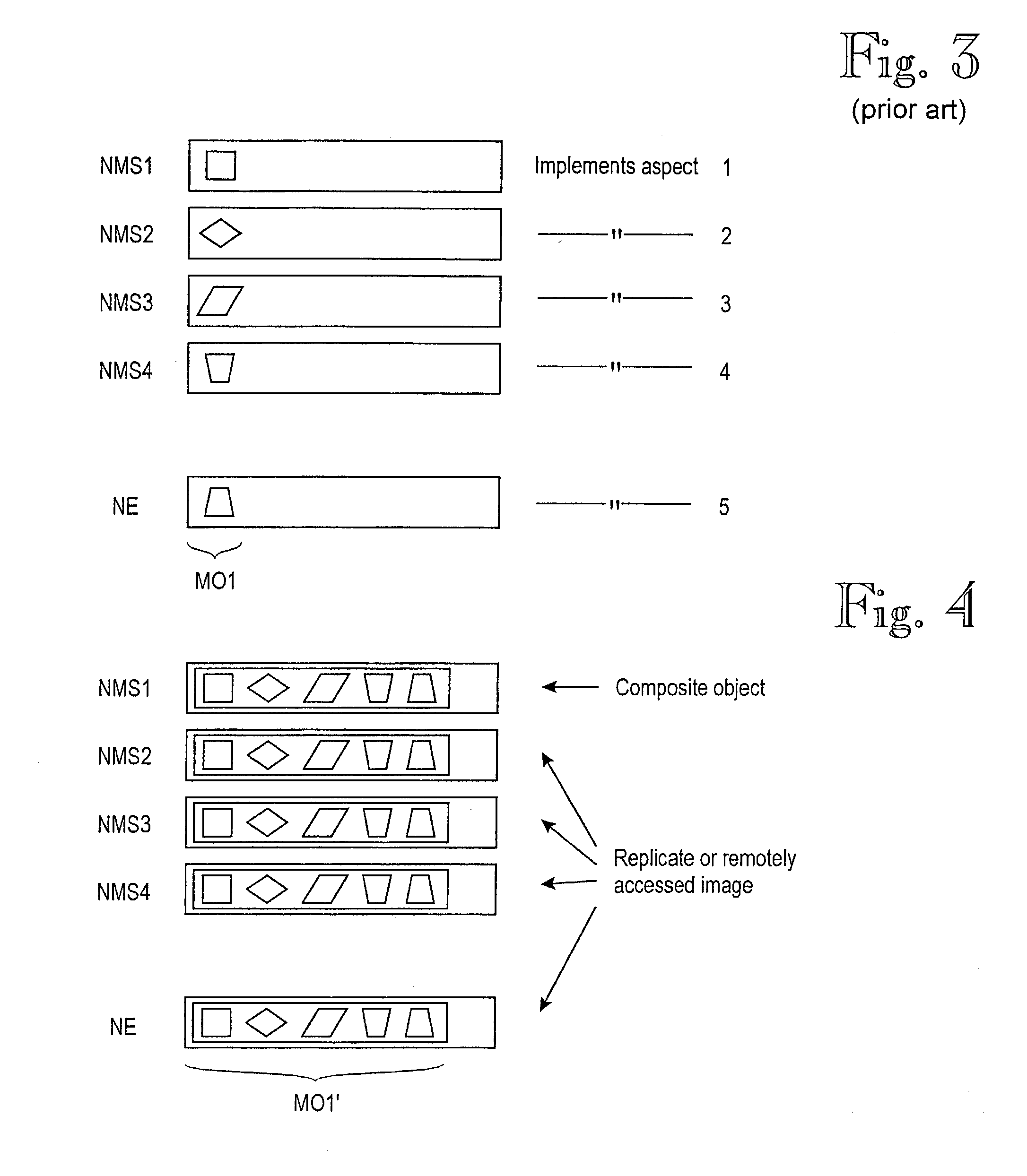Managing composite objects in a network
a composite object and network technology, applied in the field of composite object management methods and equipment, can solve the problems of resource-consuming and error-prone implementing, operating and maintaining multiple realizations of a single mo, and the high availability requirements of telecommunication systems, so as to reduce the number of different versions and implementations of an mo, and reduce the amount of required softwar
- Summary
- Abstract
- Description
- Claims
- Application Information
AI Technical Summary
Benefits of technology
Problems solved by technology
Method used
Image
Examples
Embodiment Construction
[0028]FIG. 1 illustrates modelling real resources with software objects. A horizontal dashed line separates a software model according to the invention from real world resources. A software application APPL utilizes (software) object classes. Each real (physical or logical) resource type RT is modelled by a separate object class OC. The class is provided with a class version identifier CVI which directly or indirectly indicates the capabilities of the real resource type being modelled. This means that the capabilities (the attributes and methods) of a resource type are modelled by an object class. A class is instantiated as a resource type is instantiated. Each real resource instance RI is modelled by a software object instance OI of the corresponding class. The software object instance is provided with a unique object instance identifier OII. Additionally, it is provided with an object instance version identifier IVI, which directly or indirectly indicates the model class version w...
PUM
 Login to View More
Login to View More Abstract
Description
Claims
Application Information
 Login to View More
Login to View More - R&D
- Intellectual Property
- Life Sciences
- Materials
- Tech Scout
- Unparalleled Data Quality
- Higher Quality Content
- 60% Fewer Hallucinations
Browse by: Latest US Patents, China's latest patents, Technical Efficacy Thesaurus, Application Domain, Technology Topic, Popular Technical Reports.
© 2025 PatSnap. All rights reserved.Legal|Privacy policy|Modern Slavery Act Transparency Statement|Sitemap|About US| Contact US: help@patsnap.com



